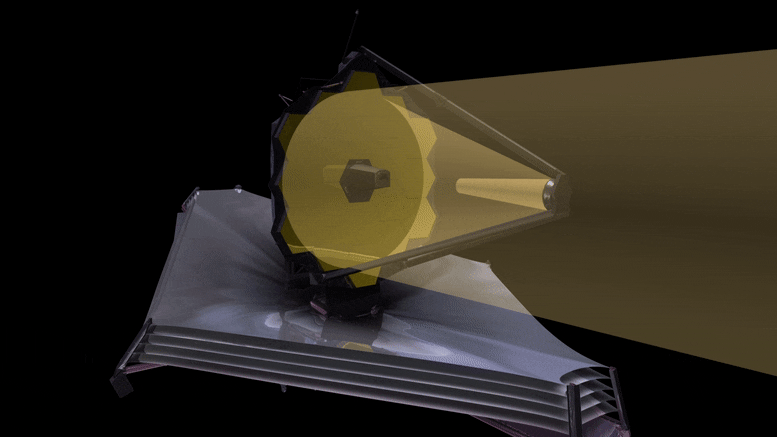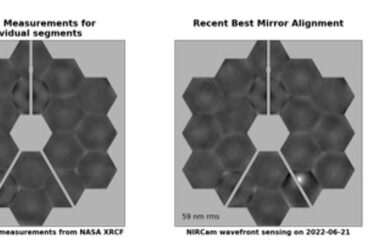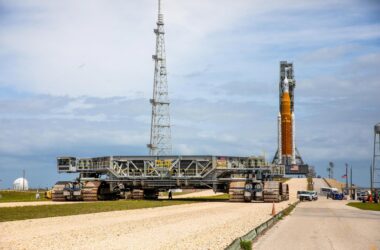
Cette animation montre le chemin que suivra la lumière lorsqu’elle frappera le miroir primaire du télescope spatial James Webb (JWST), qu’elle sera réfléchie vers le miroir secondaire, puis qu’elle traversera l’assemblage d’optique arrière où se trouvent les miroirs tertiaire et de réglage fin. La lumière est ensuite réfléchie, divisée et dirigée vers les instruments scientifiques par des miroirs de renvoi. Le JWST est un télescope anastigmat à trois miroirs. Crédit : NASA, ESA, et G. Bacon (STScI)
Le réglage précis du télescope spatial James Webb, une vue différente de Vénus et les données scientifiques d’une prochaine mission de réapprovisionnement de la station spatiale… voici quelques-unes des histoires à vous raconter – This Week at NASA!
Transcription de la vidéo :
Réglage fin du James Webb Space Telescope…
A different view of Venus …
And the science on an upcoming space station resupply mission
… a few of the stories to tell you about – This Week at NASA!
The James Webb Space Telescope team is nearing completion of the first phase of the months-long process of aligning the observatory’s primary mirror using the Near Infrared Camera or NIRCam instrument.
As planned, NIRCam has detected the first photons of starlight that traveled through the observatory and has identified starlight from the same star in each of Webb’s 18 primary mirror segments.
The result is this mosaic image release on February 11, that appears to be random dots of starlight – but is actually light from the same star reflected by Webb’s unaligned mirror segments.
This simple image of blurry starlight now becomes the foundation to align and focus the telescope so that it can deliver unprecedented views of the universe this summer.
During recent flybys of Venus, our Parker Solar Probe captured its first visible light images of the Venusian surface taken from space.
Some of the images, captured in wavelengths of the visible spectrum that human eyes can see, were used to create a video of the planet’s entire night side.
In the video, light and dark surface features can be seen, as well as glowing features in the planet’s atmosphere.
These images can help us learn more about the evolution of Venus, which has been referred to as Earth’s twin.
Our commercial partner Northrop Grumman is targeting Feb. 19 for the launch of its next resupply mission to the International Space Station from our Wallops Flight Facility in Virginia.
More than 8,200 pounds of cargo will launch aboard the company’s Cygnus cargo spacecraft.
The science being delivered on the mission includes a study to evaluate the effects of a drug on breast and prostate cancer cells, an investigation that could potentially lead to products to protect aging skin, and a system to test techniques for hydroponic and aeroponic plant growth.
This is the company’s 17th resupply mission to the station for NASA.
NASA’s Investigation of Microphysics and Precipitation for Atlantic Coast-Threatening Storms or IMPACTS mission is a multi-year airborne science campaign tracking snowstorms across the Midwest and Eastern U.S.
Data collected by a suite of instruments on a pair of NASA aircraft helps researchers determine how snowstorms develop, how much snow a storm will bring, and where the bulk of it will fall.
The current campaign is the second deployment of IMPACTS and is scheduled to wrap up at the end of the month.
Engineers at our Stennis Space Center conducted the second RS-25 engine hot fire test of 2022 on February 8.
Four RS-25s will help power our Space Launch System rocket on future Artemis deep-space missions, including this year’s uncrewed Artemis I mission around the Moon.
This was the third overall test in the current test series which began in mid-December. Each test provides valuable data that can be used to help develop the engines.
That’s what’s up this week @NASA


